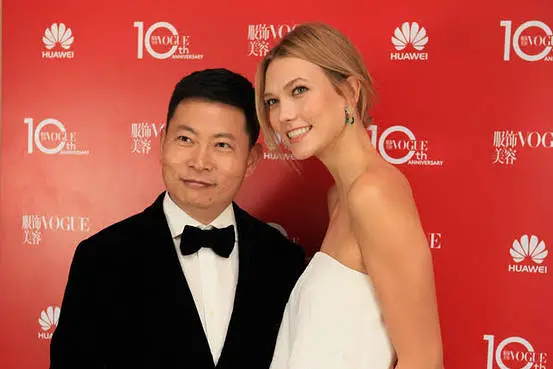(THE WALL STREET JOURNAL) Chinese telecommunications giant Huawei Technologies wants to be cool.
It’s one of the company’s biggest challenges as itscrambles to push its smartphones upmarketto challenge the current duopoly of Apple Inc. and Samsung Electronics Co.
Shenzhen-based Huawei, whichbuilt its success over the past three decadesmainly by selling telecom equipment like routers and switches to carriers, has also become the world’s third-largest smartphone maker in recent years.
To build a more stylish image, Huawei is working with designers and luxury fashion brands. This year, it has teamed up with Austrian jewelry maker Swarovski Group to unveil a jewel-crusted phone and smartwatch. Last September, it sponsored Vogue China’s 10th anniversary celebration inside a royal palace in Milan where its executives even mingled with fashion designer Giorgio Armani and American supermodel Karlie Kloss.
“In the past, Huawei focused too much on technology, but now they are opening their minds to learn from the fashion industry,” said Anita Chang, Vogue China publisher.
When Daniele De Grandis joined Huawei as its sales and marketing director for Italy in 2011, the company was virtually unknown to consumers. In a survey conducted by his marketing team, only 15% of Italians said they’d heard of Huawei. One respondent thought Huawei was a clothing manufacturer.
“For consumers, Huawei was not a brand,” Mr. De Grandis recalled.
Since then, Huawei has made its name more visible in Europe by signing sponsorship deals with professional soccer teams such as Italy’s AC Milan and Spain’s Atletico Madrid. Last year, it more than doubled its advertising spending in Italy, launching TV commercials in the country for the first time, according to executives.
Huawei has already gained some traction as an affordable alternative to Apple and Samsung in Italy and Spain, where its market share rose to 11% and 12% in the fourth quarter, respectively, from roughly 3% three years ago.
“I can take out myHuaweiphone and put it in front of me at a bar, and I don’t feel embarrassed,”saysTanyaTierney, a 26-year-old graduate student in the Italian city of Turin.
Despite its rapid growth, Huawei is still struggling to figure out how to become a brand that can justify higher prices. The average selling price ofHuaweismartphoneslast year was $204, compared to Samsung’s $343 and Apple’s $714, according to research firm IDC.
For Huawei, whose business has traditionally focused on carrier clients, building a consumer brand is a whole new ballgame.
“It’s like shot-put athelete trying to do gymnastics,” said Richard Yu, the head of Huawei’s consumer electronics business, in a recent interview.
At the IFA consumer electronics fair in Berlin in October, Huawei gave a couture-themed presentation where Mr. Yu, dressed in a business suit, walked arm-in-arm with two elegantly dressed Western female models as part of a “fashion show.”
Mr. Yu– a detail-oriented, data-loving engineer, according to his colleague–dashed back to his seat as soon as he completed the catwalk.
“Richard kept saying ‘no, no, please don’t make me do this,” said Glory Zhang, Huawei’s consumer marketing chief who directed the event.
In January, after what Mr. Yu describes as years of pursuit, Huawei announced its new partnership with Swarovski and the two firms jointly launched a $600 smartwatch studded with gemstones at the Consumer Electronics Show in Las Vegas.
After the event, Mr. Yu andSwarovskiexecutive DanielCohenplottedfuture business plans at a nearby French steakhouse, according to the executives.
To build a consumer brand, Huawei needs to change its thinking, Mr. Yu acknowledged.
“The most difficult thing is to change people’s mindset. We have to change our own mindset.”
 简体中文
简体中文



